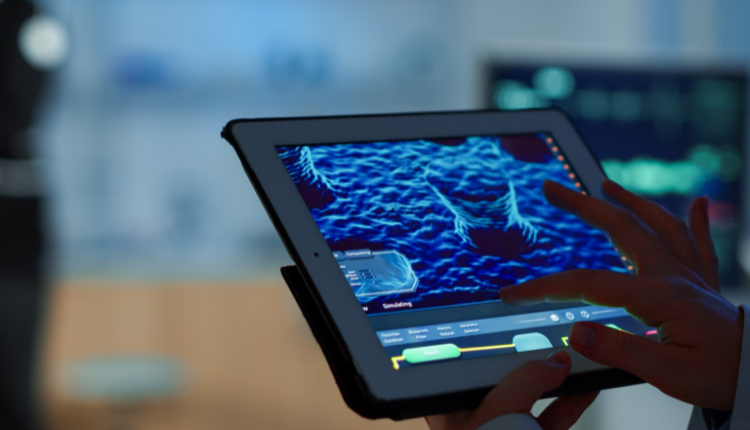The boundaries between pharmaceuticals, medical devices, Digital Therapeutics (DTx), and Advanced Therapy Medicinal Products (ATMPs) often blurred in healthcare. This is particularly evident in regulatory frameworks where a uniform, one-size-fits-all approach may inadvertently impede ground-breaking innovations.
A joint statement by the Alliance for Regenerative Medicine (ARM) has brought attention to the potential consequences of a proposed Joint Clinical Assessment (JCA) methodology.[1] According to the statement, such an approach could have resulted in the rejection of nearly 90% of the currently authorized ATMPs in the European Union (EU). The emphasis on potential rejection of Advanced Therapy Medicinal Products (ATMPs) for rare diseases raises concerns about the impact on patients who may miss out on transformative therapies. The call to modernize the Joint Clinical Assessment (JCA) framework acknowledges the inadequacy of existing methodologies in evaluating ATMPs, emphasizing the need for regulatory adaptation.
Debates over the use of randomized control trials (RCTs) versus alternatives prompt considerations about striking a balance between rigorous evaluation standards and the flexibility required for advanced therapies.[2] The importance of patient involvement and the exploration of innovative approaches from national bodies highlight the evolving landscape of medical advancements and the necessity to consider diverse perspectives. The recommendation for continued collaboration with medical device developers stresses the importance of involving stakeholders throughout the regulatory process to ensure comprehensive and up-to-date evaluations.
This revelation reignites the ongoing discourse on the delicate equilibrium required between stringent regulations and fostering innovation in the field of medical and health technologies.
Evolving Regulatory Compliance in the Digital Age
The medical device industry is experiencing a transformative shift marked by technological advancements and a surge in innovative products. As the sector evolves, so does the regulatory landscape governing the approval, manufacturing, and distribution of medical devices. From the updates to the FDA’s 510(k) clearance pathway in the United States[3] to the implementation of new MDR regulations in the European Union,[4] regulatory bodies worldwide are adapting to the demands of a digital age.
As the sector evolves, so does the regulatory landscape governing the affairs of medical devices. Regulatory bodies worldwide are responding to the increasing sophistication of medical devices and addressing concerns about outdated requirements. The challenge faced by regulatory bodies lies in striking a balance that ensures the safety and efficacy of products without impeding the timely release of in-demand devices.
Global Perspectives on Medical Device Approval Rates
Global Data’s Pipeline Products database reveals a vast number of medical devices in the pipeline, with approximately 41% in the early stages of development or pre-clinical development.[5] The FDA, facing challenges during the COVID-19 pandemic, prioritized emergency authorizations for diagnostics and devices, leading to a temporary pause in traditional approvals. Let’s explore the everlasting challenges that need attention in regulating the medical devices landscape.
- Influence on Quality Control and Approval Times
Medical devices are categorized based on their potential for harm, significantly influencing regulatory requirements and approval timelines. The FDA’s three-tier classification system – Class I, Class II, and Class III – serves as an example. The importance of adhering to international quality management standards, particularly ISO13485, is highlighted as a common denominator for all medical device manufacturers.[5]
- Challenges in Global Market Access
With varying regulatory frameworks, standards, and quality requirements across countries and regions, securing market access becomes a formidable challenge. Accurate measurement systems are identified as crucial tools to verify and document conformity with diverse standards, facilitating smoother market entry.
- Accelerating Approval Timelines With Measurement Systems
With rapid development of medical devices — accelerating approval timelines without compromising safety and quality in healthcare. This trend is fueled by advancements in technology, regulatory changes, and a growing demand for innovative and timely solutions to address healthcare challenges. The primary goal is to bring new medical devices to market more quickly without compromising safety and quality standards.
Accurate measurement systems, including non-destructive testing and automated inspections, are positioned as instrumental in expediting approval processes by enabling efficient and reliable data collection.
- The Balancing Act of Innovation and Safety
Striking a balance between patient safety, innovation, and regulatory clarity is highlighted as crucial. The report encourages regulatory bodies to provide clear and appropriate guidance to foster innovation while ensuring the delivery of safe and effective medical devices to patients.[6]
- Quality Management Systems and ISO Standards
Maintaining a robust Quality Management System (QMS) and adhering to risk management principles are crucial components of regulatory compliance. A well-defined QMS ensures adherence to regulatory requirements throughout the product lifecycle, from design and development to manufacturing and post-market surveillance.6 Richard Ohidy, a quality engineer, underscores that regulatory compliance is crucial for organizations, requiring a top-down commitment.[7]
- Addressing Ever-Evolving Regulations
The continuous evolution of regulations is highlighted as a challenge that demands constant vigilance and adaptation. The complexity of documentation requirements, global market variability, resource constraints, interpreting regulatory language, and staying updated are identified as key roadblocks.
The regulatory landscape for medical devices is in a state of constant flux, driven by technological advancements and the need for enhanced patient safety.
Navigating the compliance challenges requires a multifaceted approach, integrating accurate measurement systems, robust quality management systems, and a commitment to adhering to international standards. As the industry adapts to ever-changing regulations, practical compliance, innovation, and patient safety will be pivotal in shaping the future of the medical device ecosystem.
References:
1- Proposed joint clinical assessment methodology would have rejected nearly 90% of the ATMPs currently authorized in the EU [Internet]. Alliance for Regenerative Medicine. 2023 [cited 2024 Jan 5]. Available from: https://alliancerm.org/press-release/joint-clinical-assessment-methodology/
2- Malmivaara A, Zampolini M, Stam H, Gutenbrunner C. Pros and cons of randomized controlled trials and benchmarking controlled trials in rehabilitation: An academic debate within the European Academy of Rehabilitation Medicine. J Rehabil Med [Internet]. 2022 [cited 2024 Jan 5];54:jrm00319. Available from: https://pubmed.ncbi.nlm.nih.gov/35797064/
3- 510(k) clearances [Internet]. U.S. Food and Drug Administration. FDA; 2023 [cited 2024 Jan 5]. Available from: https://www.fda.gov/medical-devices/device-approvals-denials-and-clearances/510k-clearances
4- New regulations [Internet]. Public Health. [cited 2024 Jan 5]. Available from: https://health.ec.europa.eu/medical-devices-sector/new-regulations_en
5- Thompson N. Navigating regulatory challenges for medical device manufacturing [Internet]. Medical Device Network. 2023 [cited 2024 Jan 5]. Available from: https://www.medicaldevice-network.com/sponsored/navigating-regulatory-challenges-for-medical-device-manufacturing/
6- Navigating the regulatory landscape: Common medical device compliance challenges [Internet]. RegDesk. RegDesk, Inc.; 2023 [cited 2024 Jan 5]. Available from: https://www.regdesk.co/navigating-the-regulatory-landscape-common-medical-device-compliance-challenges/
7- Thompson N. Analysis: Navigating an evolving medical device regulatory landscape [Internet]. Medical Device Network. 2023 [cited 2024 Jan 5]. Available from: https://www.medicaldevice-network.com/sponsored/analysis-navigating-an-evolving-medical-device-regulatory-landscape/
Author:

Uttkarsha Bhosale
Editor, Enago Academy
Medical Writer, Enago Life Sciences
Connect with Uttkarsha on LinkedIn


Wow, superb weblog format!
you make running a blog glance easy. The whole glance of
your website is magnificent, let alone the content!